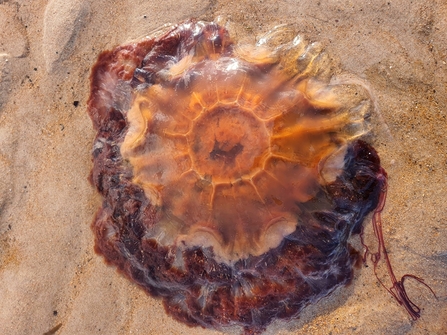“The deep sea is the largest museum on Earth, it contains more history than all the museums on land combined, and yet we’re only now penetrating it.”
Sapphire Blue fades to Inky Black
Our oceans are the life force of the planet and yet only about 5% has been explored. Most people think that the dark depths are an uninhabited place, but quite the opposite is true.
As you descend into the depths of the sea the light disappears, the sparkling sapphire water fades and changes to green and then slowly to black. The pressure increases and the temperature drops, but despite these harsh conditions of this extreme environment, life finds a way.
The inky depths are home to some incredible life forms. From the exciting leafscale gulper shark (centrophorus squamosus) to the creepy stoplight loosejaw fish (Malacosteus niger) – both of which can be found in the deep waters off the coast of Northumberland!
It may seem like an alien world at the bottom of the ocean, but we do occasionally catch glimpses on our beaches and in the tidal zones. When I was younger, I was walking down Blyth beach with my Brownie group and we came across a deep-water spider crab washed up on the beach. I was entranced, the legs alone were enormous, and its colour was a deep orange – it was like nothing I’ve ever seen before!
Glimmers of the deep can be seen all around. After high tides and high winds, you may notice the sea is colder and murkier than usual, this is due to a cold upwelling that stirs up the deep into the shallows. Although it brings the cold water it can also bring a high volume of nutrients which is fantastic for the marine life not just in Northumberland but all over the world. Usually, the species we see are jellyfish, just a few weeks ago there was blooms of jellyfish all along the coastline, both Moon Jellies and Lions Mane Jellyfish.

A lions mane jellyfish found on Blyth Beach. Photo by Katarina Martin (@katarinamartin1997).
It's a sad reality that not even the deep ocean has escaped the unmistakable mark of mankind. The deepest part of the ocean – The Mariana Trench – was filmed and there lying on sea floor was a plastic bag.
The issues that the oceans are facing are very much out of sight, out of mind. If we can’t see the issue, then it’s not there – right? To help, we as humans need to find a way to reconnect to the ocean. There are many ways to connect with the ocean: help in beach clean ups, watch a documentary about the ocean, try a snorkel in the waters around Northumberland (Snorkel Wild is a great company to use) or if you’re feeling brave try giving scuba diving a go (The Fifth Point Diving Centre are great local diving centre located in Blyth, who have a focus on marine conservation).
If we all do something small, then the impact will be massive and the oceans will thank us.
So next time you’re at the beach or near the ocean spare a thought for the deep, and for the creatures that lurk there.
Follow Katie on social media here:
@katarinamartin1997 on Instagram

